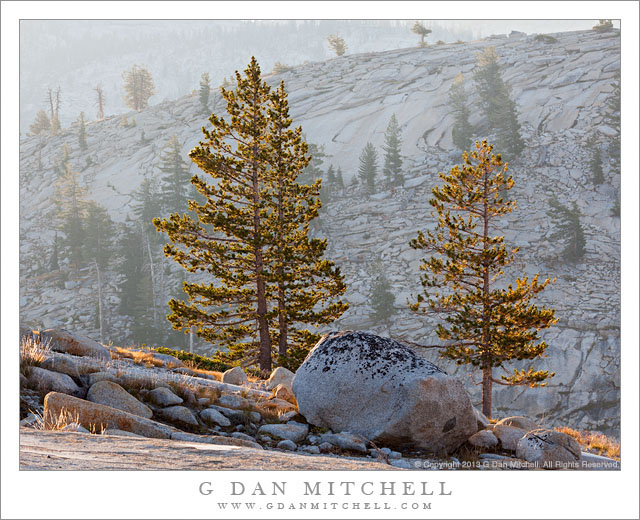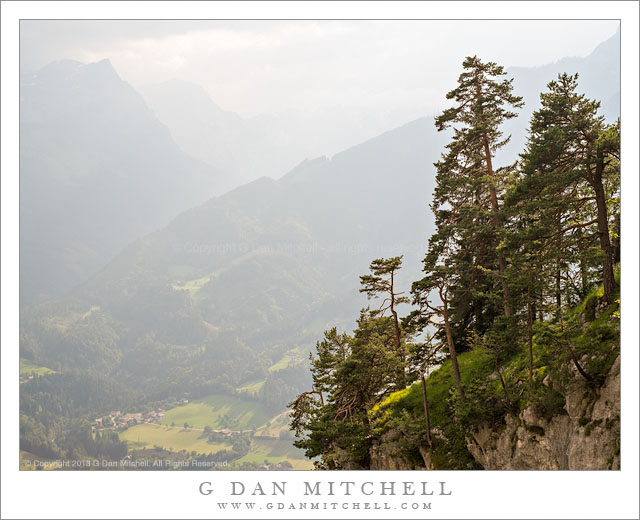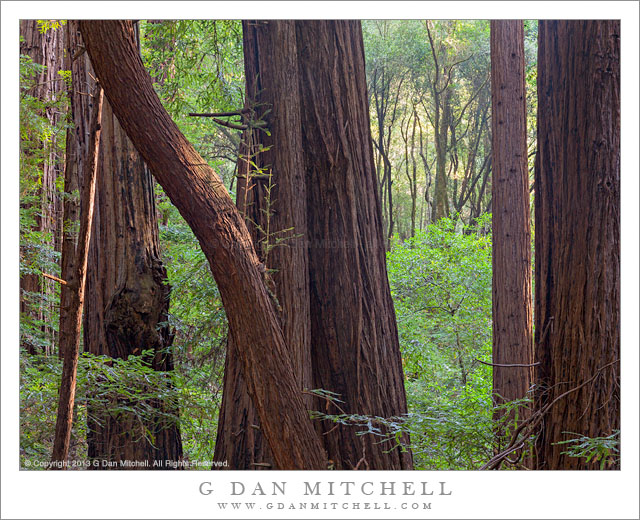
Trees and Boulder, Morning. Yosemite National Park, California. August 6, 2013. © Copyright 2013 G Dan Mitchell – all rights reserved.
Morning light on a boulder and a small group of trees growing on a granite slab in the Yosemite high country.
I suppose this sort of shot is turning up with a great deal of frequency among my photographs. I can’t help myself – I’m crazy about the combination of back (or side) lit trees, granite slabs and boulders, and haze obscured mountains, forests, and domes. I suppose this may be because such views, especially early and late in the day, seem to me to characterize the high country of Yosemite as much as just about any other feature.
This group of trees grows in a well-known location, and I drove to it before sunrise so that I could be out and about and looking for light from the get-go. This is a location that I have shot quite a few times in the past, so I feel like I’m getting more of a handle on what some of the possibilities and potentials are. On this morning I began nearby in a spot where there were lots of long shadows still, and after the sun rose a bit higher I moved on to this area of granite slabs and glacial erratic boulders, looking for trees that could stand against the more distant background of the glaciated granite forms with sparse trees growing here and there – in fact, on that far ridge they grow much the same way as the trees that are the central focus of this image.. There is almost always some haze here at this time of day, but it may have been just a bit thicker than usual due to a fire on the east side of the Sierra.
 G Dan Mitchell is a California photographer and visual opportunist whose subjects include the Pacific coast, redwood forests, central California oak/grasslands, the Sierra Nevada, California deserts, urban landscapes, night photography, and more.
G Dan Mitchell is a California photographer and visual opportunist whose subjects include the Pacific coast, redwood forests, central California oak/grasslands, the Sierra Nevada, California deserts, urban landscapes, night photography, and more.
Blog | About | Flickr | Twitter | Facebook | Google+ | 500px.com | LinkedIn | Email
Text, photographs, and other media are © Copyright G Dan Mitchell (or others when indicated) and are not in the public domain and may not be used on websites, blogs, or in other media without advance permission from G Dan Mitchell.


